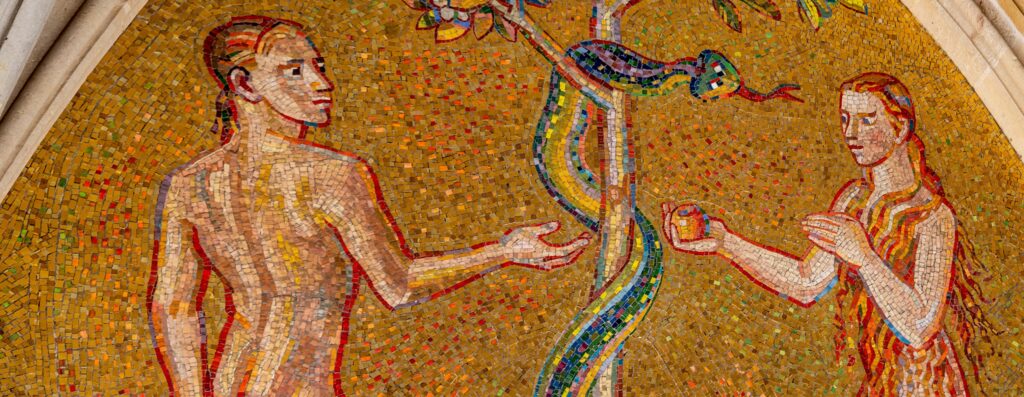Introduction to the Knights of The Forbidden Fruit
What do we think this apple is symbolically referring to. One of the biggest questions posed by the book of Genesis is this story of Eve and the forbidden fruit. Is it historical or just allegorical, and more importantly, have we been fooled?
In the modern-day filmography, art and gaming world, we have the fantastical ‘The Apple of Eden’ in the Assassins Creed franchise. Having never played the games, the uninitiated viewer could feel a little lost and confused in this movie, which was adapted from the ultra-popular video game series.
The fundamental plot of Ubisoft’s franchise Assassins Creed is based on the principle that two orders—or sects, which contribute as the main plot themes, fight to claim the ‘Apple Of Eden’ each for themselves and has endured and have clashed ever since. We can also see a fantastical link with today’s modern Freemasons & Neo-Templars and their counterparts (non-Freemasons). The movie clearly makes that link by showing Freemasons Hall London dressed up to look like a temple of the modern-day of one of the Neo-Templar orders [1].
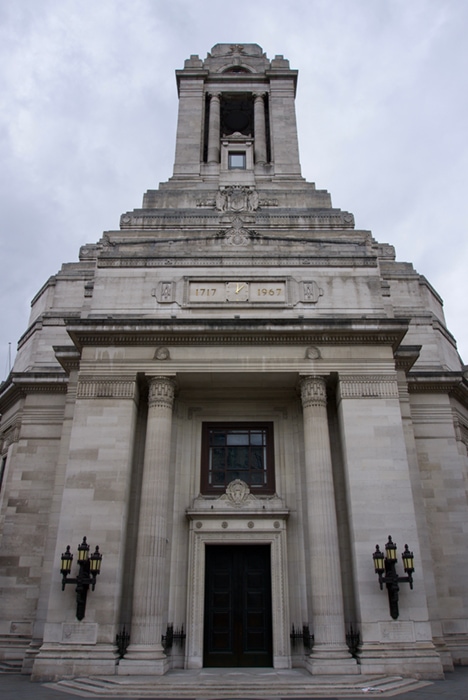
The Scenario, Ezio and his Central Role
The scenario of all ‘Assassin’s Creed’ is based on the millennial confrontation between the Templars and the Assassin’s fighting for control over The Apple Of Eden. The former, founded in 1129 and dissolved in 1312, is recognised as a Christian religious and military order which distinguished itself during the Crusades. The latter was a religion that professes an esoteric reading of the Quran, active between 1094 and 1257, more generally known as ‘Nizarites‘.
In their view of the future, the Assassins and Templars are fundamentally opposed: the former support absolute free will, while the latter favour scholarly power in the hope of shaping a better world and future for mankind. It is difficult, therefore, to distinguish which side is good or which is bad. Both cults do not hesitate to torture and kill to push their ‘Creed’ (convictions). We see this Apple portrayed as a kind of weapon against humanity/mankind.
In the game and movie beginning in the ancient times/middle ages and mainly later in the thirteenth century, we have many history lessons and many historical characters including Borgia’s, Pope’s, Templars even Christopher Columbus etc. In the game, we learn the Apple was shipped to Venice for the Grand Master at the time, Rodrigo Borgia. However, Ezio Auditore (the hero) managed to procure it before it could be passed into his hands.
End of the Reconquista 1492 (Era the Movie was Set)
Let us go back in time to see if we can discover more about Ezio and this era. The Spanish Orders were fully independent of The Poor Knights of Christ and The Temple of Solomon (Knights Templar) due to the Knights Templar and their mission to defend the Holy places of Jerusalem, the Latin states against the so-called, ‘infidels’. Their mission was not to defend Spain and take part in the Reconquista at the same time [2].
The goal of the ‘Reconquista’ was the main interest of the Spanish Templar Orders, and we find during the sixteenth century, end of 1556, there were three Orders, Calatrava, Santiago and Alcantara. These orders were fused and were put under the Crown of Spain. It is a consensus that The Poor Knights of Christ and The Temple of Solomon (Knights Templars) wanted to be under the Christ crown; we see this clearly when we read the prologue of their rules [3].
When it came to the end of the Knights Templars in France, they had the option to join the Spanish Templar Orders, although most joined the Hospitallers.
By researching and reading, it is easy to see it was a popular myth (pseudo-history) to say that The Poor Knights Templars of Christ (Knights Templar) were continuing their order and their secrets within other Orders. The Montesa Order shows Knights Templars were not so welcome due to them not really engaging in the Reconquista of Spain. Hospitallers were far more engaged in the Spanish Reconquista than the Poor Knights Templars of Christ (Knights Templar). We find no links to The Apple Of Eden at all within the world of The Knights Templar.
Who Were the Knights of the Apple Of Eden
The movie and the game make a link with The Poor Knights Templars of Christ (Knights Templar) against the ‘Assassin’s, although there is no real historical value in this link, as we will now expand upon. It was the Spanish Orders that were, in fact, independent from the Knights Templar during the Reconquista, which battled fervently to regain their Country; this was the main reason for the creation of these Spanish orders. We see in the movie a continuous fight for The Apple Of Eden by The Templars and The Assassins.
The Reconquista was dependent upon the different parts of Spain. Apart from the battle of ‘Puig, Spain’ in 1237AD, there were no real battles, a structured conquest or a continuous advance towards the south. Still, submission operations negotiated with the Muslims, which by enveloping movements allowed the progressive incorporation of the territories into the kingdom [4].

The main Templar Orders in Spain were Catholic, and their members respected the classical three vows of (poverty, chastity, obedience) and other rules appropriated to them. The study of these orders clearly shows the difference between the Knights Templars of Christ (Knights Templar) and other Templar orders. Later in the movie, we see the Apple ending up in the hands of Christopher Columbus, whom many pseudo-historians links with The Knights Templar with their pseudo theories believing The Knights Templar after their disillusion became Pirates. There will be a separate article in the future on Templarkey regarding this story.
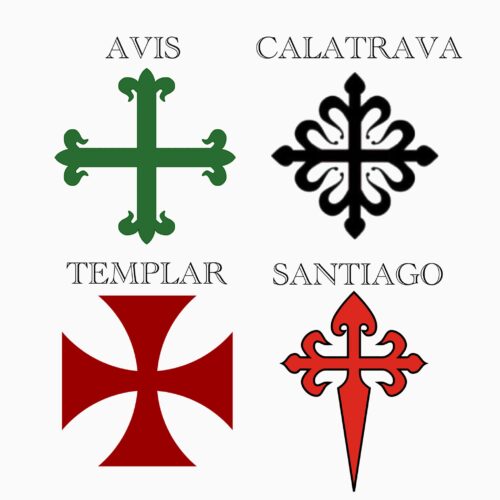
- Calatrava Order: Founded in 1158AD, to fight against the Muslims, Almovarides were more dangerous for Spain than the Turkish Seidjoukides threat in the Holy land for the holy Christian places [5]. The Calatrava were a religious Cistercian Order obligated to battle, similar to the Knights Hospitaller; the Poor Knights of Christ (Knights Templar) were the opposite due to them being warriors first, religious later when Bernard De Clairvaux participated in writing a religious rule for them, which was then adopted during The Council of Troyes (1129AD).
- Santiago Order of the sword (Santiago for Saint James the Greater) or originally the Fratres de Cácieres at its origin: Founded in 1170AD by the king of Castille Ferdinand II de Leon and Castille, to fight against Muslims and to protect pilgrims going to Santiago de Compostela as the new Holy Land or city to compete with Jerusalem. Pope Alexander III recognised this order in 1175AD. Following the Saint Augustine rule under a ‘Grand Prior’, Clerics of this order were following the secularised Knights called knights of Santiago under their ‘Grand Master’ [6]. Isabella the Catholic dissolved the Order in 1493AD. They were fighting against heretics.
- Alcantara Order: Founded in 1156AD and confirmed by Pope Alexander II in 1177AD. The orders aim was to imitate the Poor Knights of Christ (Knights Templar) to defend against the Muslims. They followed the rule of Citeaux. Fortress of Calatrava was given By Alphonse VII, king of Castille, to the Templars. However, they were too busy to defend the Holy Land and could not defend the place against Almovarides; in 1187AD, they then returned the Fortress to King Sancho III.
- Santa Maria de Montesa Order: Founded on the 10th June 1317AD by Pope John XXII, after the dissolution of the Poor Knights of Christ and the Temple of Solomon (Knights Templar), and for a new organisation of military Orders under the Crown of Aragon.
The king of Aragon initiates proceedings against the Templars and the seizure of all their property, which remained under royal administration. The Spanish King James, the II of Aragon, particularly refused the transfer of the commanderies of the Temple for the benefit of the Hospitallers of Saint John due to them having a too powerful seigneurial power of this religious-military order.
In 1311AD, the king instead proposed to the Council of Vienna the transfer of property to The Spanish order of Calatrava first. However, at the end of the year 1312AD, the King proposed creating a new military order called The Order of Montesa in the kingdom of Valencia. Therefore after many negotiations with Pope Clement V and his successor John XXII on the 10th June 1317AD, Sante Maria of Montesa was created. This order absorbed all the properties from the Knights Templar and Hospitallers.
Consciousness as Lord God Commanded, Forbidden Fruit/Love Apple
The Forbidden Fruit/Apple of Eden account is linked with Genesis book 3—or the book of Nahash. Genesis 3:4–5 Desiring this wisdom, Eve ate this fruit it even though God said, “anyone eating this fruit, will surely die”, and gives some to the man who also eats it. This is where we get the terminology (adam’s apple). Genesis book 2: Is the book of Adam and Genesis book 1: Is the Book of the Creation. Each part of the book of Genesis speaks of the Cosmological concept of Creation, from the spiritual Light and Verb (Word) consciousness (brain science) until his final manifestation in what we call ‘the material world’.
In the jewish tradition both ancient and modern hebrew, Nahash in the sacred language is not at all a ‘Snake’ and not at all the ‘new age’ fabrication of a Reptilian being. The ‘Snake’ is a zoomorphic symbol, an allegory that represents a step in the creation of the sensitive world, or ‘material’ world, and of the ‘flesh’ body with its senses.
The existence of space and time at the same time. Simplistically with a very short sum up, the book of Adam speaks of the extraordinariness of the ‘Invisible Adamic body’, which is supposed to materialise itself so the disciple could see and come in contact with him after his resurrection (highest level of teaching on the alchemical process hidden in humanity which is different from the animal).
This possibility to ‘materialise’ needs the creation of a special principle called ‘Nahash‘. Through these teachings, we understand immediately two new ways of existence. One is spiritual-intellectual and the other as the physical biology, and we are made of that non-dual/duality as they are one, but not one, dual but non-dual, in a way that the Shape of a church teaches us about ‘Monism’.
The Nahash represents the creation of a new level of existence wanted by ‘God’; it is linked with the Tree of the Knowledge of the good or evil or (Tov and Ra). By introducing a tree which bore fruit, we can now understand why it is thought there was an Apple. The Yetzer Hara and Yetzer Tov are two functions in the consciousness, a concept that is well known in the Jewish World.
When we read in the biblical story in Genesis about the tree of knowledge (the tree of good) and the Apple, (in modern Hebrew good is Tov (Hebrew word) for accomplishing and evil is Ra ר ע – raʻ [rah] for not being accomplished to its perfection).
They are the two impulses (urges) from the Tselem or (shadow); these impulses (urges) are the Good and bad ‘angels’ or Melek (meaning sent), in the Man. Those impulses (urges) seem to be sent Melek (messenger) to the Human to make him act.
We can compare this to hearing voices or angels being sent to do bad or do good. This consciousness process is transforming by the allegory of good angels or bad angels pushing you to do good or bad. To eat the Apple was a metaphor of this impulse, although we will read later was there, in fact—an apple or any kind of fruit at all?
Exteriority is Ra, for the end, last—not perfect. Tov is interiority meaning light or ‘shining’. The Tov is the perfection of Light, and Ra is something which seems to have no light in, an exceedingly long perception of light.
Ra is also an impulse (urge) for the material world, as Tov is an impulse (urge) a word for jewish action for the spiritual world. In the Tselem (shadow), we see one important function for this Tselem in Kabbalah: acting as an intermediary between the soul and the body.
It needs to unite the two worlds, and it can be assimilated to a translator for ‘the two mental or (mind) functions’ and must help receive or manage (72) mental or (mind) behaviours. Therefore the 72 angels relate to the Mercury sephira in the Sefirotic Tree. These 72 behaviours or thought impulses (urges) cover your essence, by the Tselem (Hebrew word) as a sort of Tselem that is a cover or a veil for your soul. It helps you to connect with that material world.
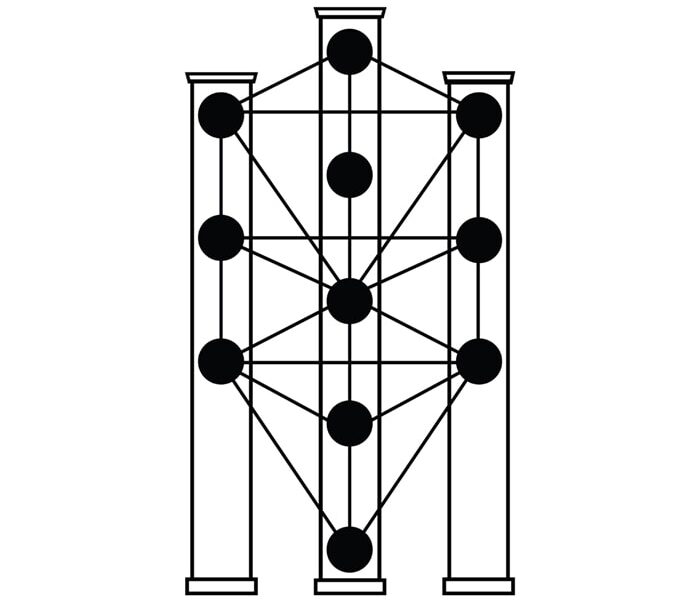
The Adam and Eve as Lord God Commanded
As Adam-Eve (an allegory), (meaning in part of us/human brain), and The Apple Of Eden having connected with mind elements of dual impulse—losing ability of non-dual state, and to join dual/nondual. The Pomegranate fruit and fig fruit are also prominent fruit and fauna in this garden realm of paradise where a woman is said to eat from fruits that would cause death by eating from the deadly apples on the fruit tree that contained knowledge. Clearly, this particular fruit tree in the garden that tempted the woman Eve to eat its deadly flesh is significantly important hence we will give kabbalistic interpretations within this article.
This Genisis story is allegorically and metaphorically explained and can be compared to the knowledge of duality and dual voices or thoughts to perfect, staying in passions but not transforming them into virtues. Also, it is the same energy or—anima transformed in ‘animal’. The Anima is the vital principle of your animal body (see Carl Jung). In the movie Assassins Creed, they use the Animus machine to regress people. The Apple Of Eden is looked upon to be the only power in the universe able to rectify man’s sinful nature.
This means the story of the Garden of Eden and The Apple Of Eden spoke not only of cosmological concepts about the creation of the material world but also of an aspect of intelligence or consciousness hidden in the creation. Something linked with a sort of mind in the cells and even in the subatomic level (see Satprem le mental des Cellules).
By way of allegory, the tree and the fruit in the Garden of Eden and The Apple Of Eden speaks of different concepts of cosmology and, in turn, about philosophy to understand the world, the elements and the relationship between the soul and the body or spiritual reality or spiritual world and material world.
That means the father aspect is non-dual and causes only good, but the dual principle is virtually the cause of evil or bad. Although, in fact, evil does not exist, it is we that create bad by our intellectual choice and lack of Charity—Wisdom. It is by the attraction toward an ‘ego’ independent from our Adamic nature that we create the Sin, and by an attachment to it, and two more illusions by desire or concupiscence for the material or sensitive body or the sensitive world, by the ‘ego’ illusion created by dual perception.
That explains that all the source of suffering comes from greediness or desire, with ‘avarice’, which is linked with money as a symbol of the material world, as ‘ego’. The ego repels the possibility to know your true will—so the little will only exist.
The hidden secret of that non-dual teaching was hidden in the cross and in the cross in the circle, as the letter Tav. It is equivalent to the Yin/Yang symbol. The unity of dual, as in the church symbolically meaning unity, was not altered by that dual aspect. The link between the cross and the circle finished in the allegory of the ignorant teachings, which made us think the snake was a symbol for eternity or immortality.
This is not true as it symbolises the material function. It is why it was crucified on the cross by the Jewish action of Moses as an annunciation about a reality hidden in the material world—another light and word of flesh. It is why the snake represents the art of illusion, magic etc., because of that power to think your ego, with all its consequence, is ‘god’.
Nahash fixed us in Nature, but we possessed the free will not to choose the bad will or—little ‘ego’, thinking is like free will to do all we want. Although in that case, you lose to work and to see your consciousness beyond the mind.
The account in Genesis 3:2 explains that the ability of the mind (presented as feminine) thought to be able to be fed from the upper part of the consciousness and divine realm. The Nahash is an aspect of the creation of a new aspect of nature (Nature Naturee and not Nature Naturante, an answer which is false.
In that world, they will eat some of the upper parts because of their contact with the sensible world, in which the conscious light and Verb—(word) is so hidden that it will be difficult not to be trapped in the ‘ego’, and that conduct to the ‘final destruction’ by losing contact with the Adamic nature in this Hebrew concept.
The forbidden fruit eaten by a woman or the fruit as the Apple of Eden in the garden of paradise is the assimilation with that sensible world. We have other fruit in Eden and throughout the bible being eaten, such as the sweet fruit, pomegranate, fig, and even grapes. Although the pomegranate seems just a normal sweet fruit, it is highly esoteric linked to wisdom when we see it in the World of art.
There is also wheat which is linked to sowing the seed of Man, with the sown wheat symbolically referring to fertility rites, and for Freemason’s wheat is linked to the resurrection cult of Hiram Abiff. Grapes on the other hand are seen as sinful and are linked with the fall of Noah.
So by understanding these allegories, you do not die—but new senses will appear as outer senses. By that union with that end aspect of the Creation, they will have access to the knowledge of evil as an ability of the lowest aspect of the consciousness—to produce good fruits/apples to ate by woman, wheat etc. or bad fruits ate or drank such as grapes in this Hebrew garden.
By the senses path and the vision process linked with light, the sensitive faculties will link with intellectual faculties. That is the concupiscence secret for that sensible world, which will influence intellect. By the sense’s attraction toward the outer and not the inner, the Adamic origin will be lost. The mind will be turned outer—and not inner, to discover his Adamic nature or perfection. That is the sin of concupiscence, for that world is similar to the senses being linked with the flesh body; it is about that Saint Paul speaks as an origin of all sins—and failure.
Saint Paul had a high knowledge of esoteric teachings—regarding the double sense of the flesh. To lose its high Adamic origin, we go deeper and deeper in the material world until losing all contact with the true will. By strong or weak links with the Adamic element, we will have three sorts of beings by the mixing with elements—being similar to the three Indian categories Satva, Gunas and Tamas.
Genesis 3:6 shows the assimilation with the sensitive world until the manifested world (Nature Nature). That explains it was a full agreement to be fully united in this world. The inner teaching is hidden within the allegory of Jesus incarnate in Mary of Magdala—or the new revelation given to a ‘woman’. The world of desire is not seen as evil—but good, desirable as a divine manifestation.
By not understanding our true Adamic nature, by the strong link in our energy side—Isha is linked to senses—such as Ish is linked with spiritual-intellectual. The composed Ish-Isha will be in temptation with what ish is not their Adamic principle.
They will be caught in the illusion of matter, and now they have a full potential to realise the evil due to the inner impulse coming from contact with that world. This knowledge in which we are speaking here is about the Adamic nature, as spiritually able to manifest and was understood as sexual intercourse—although in the esoteric teachings it is about a union of spiritual-intellectual aspect—before all incarnation. This is the sense of (marriage in the bridal chamber in Philip Gospel). The union of two principles as One—this is the Law of creation.
Non-initiates were unable to conceive it was cosmological teaching regarding the universe and consciousness in humankind. That high teaching could serve about teaching for a couple as one soul, since the origin.
Cosmological concepts were humanised with the risk of idolatry, as we see nowadays regarding Gnosis. The intertwined or—the union of two aspects as Spiritual-Material consciousness fully united in a body. So that the light body transforms in ‘flesh’ as the—fig image, Adam materialised himself to be in that world as an aspect of consciousness impregnating all, as we now understand the metaphor of wheat within a biblical context.
Kabbalah, Fig Leaves, Wheat and Forbidden Fruit
Jewish and Christian Kabbalah kept this hidden garden and its garden knowledge within their Kabbalistic teachings, which we will simplify below; we see this world being under the creation of the four levels. Within this concept, we can assimilate the spheres with apples as in the forbidden fruit/garden of Eden story as told by God.
- Atziluth (Hebrew word) world made of divine names summarise by letter
- Briah (Hebrew word) world made of archangels’ names to show a new consciousness level summarised by the letter He (Nature Naturante).
- Yetzirah (Hebrew word) world made of angels’ names, for the lower levels is summarised later.
- Assiah (Hebrew word) world made of planets names to show how we are in the ‘material world’ under destiny (planets rulers), summarised by the letter He (Nature Naturee). The Christian teachings have no link with astrotheology, as we understand, as it was speaking even before the existence of planets.
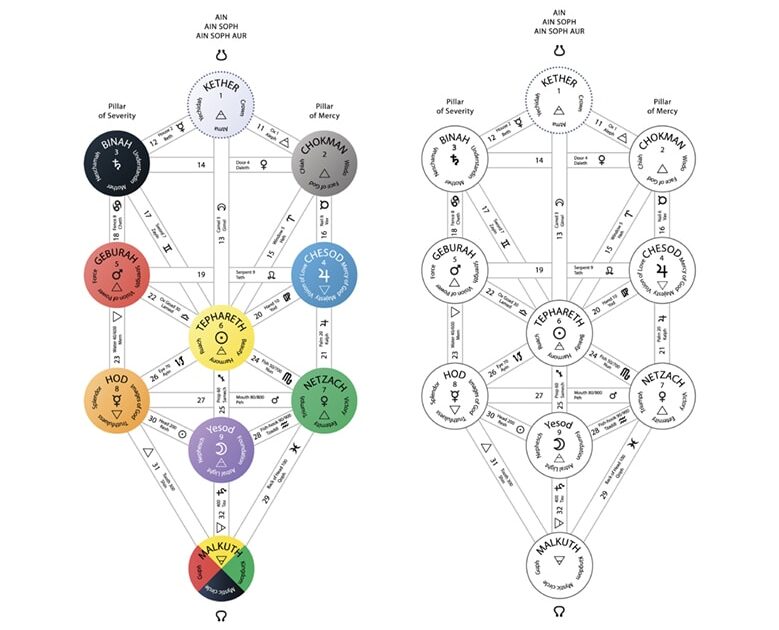
By the four letters of Tetragrammaton, we understand all the universe is divine in all its levels.
That destroyed all the supposed evil creation in the World, and it is why Christianity was nondual and could not agree with the dual understanding called heresy—as a choice for dualism theology. This is hidden in the myth of The Apple Of Eden.
Adam-Eve was not hidden from God; it was just emerging in the last world of ‘God’ by free will, although the intellect aspect with the sensitive aspect created a sort of distance with its Adamic nature through eating the (forbidden fruit) The Apple Of Eden. In a sense, Adam-Eve was a high aspect of consciousness and was hidden from the upper world—Garden of Eden, they were in another state of consciousness—as ‘human’.
The teachings in the bible from God of fruit and to eat this fruit within the bible are, in fact, the teaching about the evil side being fully virtual—and could not be physical if that free will or consciousness chose not to act in the passions—or idolatry for its ego and Logismoi. The manifestation must destruct the evil to create suffering and renounce it naturally—to avoid that suffering for you—and so for others.
For some Gnostics, if they thought to do bad—it was as if to do it. Although that failed, and they forgot the teachings regarding the free will—who does evil (to eat fruit or drink wine in the bible) is responsible for all the consequences—that evil could do on to the others.
The non-existent evil existed and could not find peace until humanity renounced to the ego passions and mind entropic behaviour creating disorder. Nahash is the principle of the ego or lower will of (God) his fruit and his (God) mixing with all the sensible reality, which fuelled the ego existence more than the higher Adamic nature.
In Assassins Creed, we saw that the Apple of Eden as a sort of genetic control by someone and by the blood staying in the Nahash or—ego of illusion power. They want to rule the others by suppressing genetically—the root of rebellion and violence to dominate people.
They are not better than the Assassins who were supposedly born with violence in them, as did their ancestors being murderers; they will stay murderers. That is the consequence of ‘ego’ opposite to Adamic seed coming from above (to drink the eucharistic wine and eat the bread). To eat—but not of The Apple Of Eden.
Kabbalah, Generic Fruit, Drinking Wine and Fig Leaves
As we have read above, there are many allegorical words within the Kabbalistic teachings within the bible, so we must think of words within many other writings as either allegorical or metaphorical. If we read words such as word fruit, fig leaves, to eat bread, to drink wine, fruit adam manifested, particular fruit, generic fruit and sewed fig leaves, we should understand them as mere words used to hide other meanings.
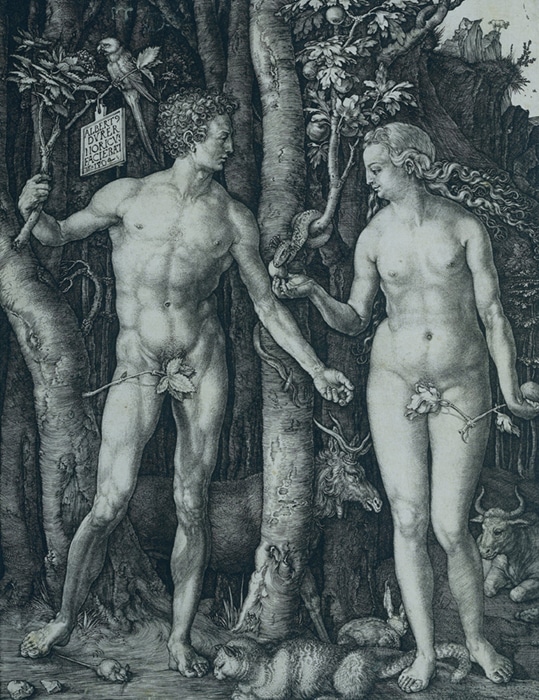
Fruit, Wine & Where is the Apple?
Was the ‘forbidden fruit/apple’ in the Garden of Eden really an apple? Here we join the concept of free will in the movie, which is linked with genetic control, as a solution to manipulate cells (origin of life), linked in some accounts with sexual knowledge, which does not explain nearly enough, and the eating of the apple/forbidden fruit.
The tree of life is nondual; the tree of knowledge is a ‘mental dual function’. But they are one; therefore, the tree of kabbalah has tree pillars, a middle pillar with two other pillars on each side. That tree represents the human body in its different levels and qualities of the body, soul and spirit, i.e. the five elements of soul being (Nephesh, Ruah, Neshamah, Haya, Yechidah).
The passage of the Garden of Eden and its apple is for Jewish people, derived in Briah— world (first letter of the word Bereshit), meaning not here on earth. It speaks of the creation of all universes as being conscious universes. It is an allegory about consciousness also hidden in the material world—but veiled by the Snake—as Nahash Leviathan.
The forbidden fruit and the tree: so, where do we find The Apple? (where is The Apple Of Eden).
- Genesis 2: 16-17 All trees could be eaten from, but not the tree of knowledge. God speaks of the tree, not of the fruit. (not The Apple Of Eden).
- Genesis 3:1 Tree and not Fruit. (not The Apple Of Eden).
- Genesis 3:2 Speaks of the fruit by the woman. (not The Apple Of Eden).
- Genesis 3:6 The tree is good…like all the trees (see genesis 2:9), not the fruit. (But go to eat the fruit) or (The Apple Of Eden).
- Genesis 3:9 God speaks of the tree.
Conclusion
By understanding the kabbalistic aspects in the Jewish/Hebrew teachings within the bible, some gnostic understandings, and a philosophical approach, we hopefully clear up some misconceptions on the subjects in question within this article, including The Apple Of Eden.
Firstly: There was no apple in the book of Genesis in the bible, so no Apple Of Eden or an actual physical Adam and Eve, so no Apple Of Eden or the idea of Sin in paradise. The movie and the games infer that the Templars were searching for the Apple of Eden; in fact, we can replace that by saying the story is about the idea of the grail mythos within the new age movement and their misconceptions of a fake bloodline.
Secondly, if we take the symbolical meaning of the eagle shown within both the movie and games, it is easy to understand it represents Saint John within (Gnostic primitive Christianity). And if we compare the movie Blueberry, it is clear to see the eagle represents the soul as it represents a totem animal linked with the soul. Within the movie, The Assassins Creed this eagle represents an exploration of the past lives of the ancestors. For the Knights Templar, the eagle of Saint John is an aspect of their spirituality.
Thirdly: To explain Knights Templar spiritually, we clearly see in the movie this spiritual aspect when Callum/Aguilar de Nerha is about to be injected with the lethal injection the priest recites psalm 51:2 Wash me clean of my iniquity and cleanse me from my sin (see the biblical story of Noah and his drinking of wine). If you read all the above article, we can link that with Isaiah 1:16 Wash yourselves; make yourselves clean; remove your deeds from my sight. Stop to sin or do evil. Cleanse your consciousness. Symbolically, The Apple Of Eden in the movie is the only tool for humankind to come out of its sinful existence.
Within Coptic theurgy of the Psalms by the Liturgy of Hours and the Missel Romanum, a great understanding can be made for this and Knights Templars spirituality. His Callum/Aguilar de Nerha symbolic death was 21/10/2016, which is a feast day for Saint Ursula and the 11,000 virgins as a cult of the martyrs, which is linked very much to Knights Templar spirituality.
All of this will be expanded upon in another article regarding The Knights Templar Spirituality. Thankfully there will be no need to discuss this allegorical apple, gods or Assassins Creed characters such as Ezio and Aguilar.
References
[1] See our first article on templarkey.com site regarding who were the Knights Templars in medieval times.
[2] Demurger Alain, Les Templiers, Une chevalerie Chrétienne au Moyen Age, Editions du Seuil, 2009, pp 244-252.
[3] To understand the prologue for the Poor Knights Templars of Christ (Knights Templar), see our site templarkey.com.
[4] Juan Boix Salvador, « La noblesse et l’ordre de Santa María de Montesa dans le royaume de Valence (xive-xve siècles) », Cahiers de la Méditerranée [En ligne], 97/2 | 2018, mis en ligne le 18 juin 2019.
[5] Giet Stanislas. Francis Gutton, La chevalerie militaire en Espagne : L’Ordre de Calatrava, 1955. In : Revue des Sciences Religieuses, tome 31, fascicule 1, 1957. p. 90.
[6] Caroline Brousse, « L’ordre de Santiago, témoin et acteur d’une nouvelle classe nobiliaire dans les Espagnes des XVe-XVI e siècles », Cahiers de la Méditerranée [En ligne], 97/2 | 2018, mis en ligne le 18 juin 2019, consulté le 08 septembre 2020.
